LA REVUE RUSSE
52
Sentio ergo sum : corps, perception de soi et identité dans la culture russe
Galina Kabakova
The Human Body in the Etiological Russian Texts
We propose to study the representation of the creation of the first humans and their physical peculiarities in Russian oral literature. This representation came partly from apocryphal texts, mostly translated from Greek, which had been in use in Russia since the twelfth century, and partly from folklore.
This dualism underpinning the representation of the creation of man is peculiar to the etiology of the Eastern Slavs ; man in these texts is at the same time divine creation and diabolical creature. The popularity of this mode of representation can be explained by its etiological character, in other words by the explanation that it provides as to the origin of the impurities in the human body, and diseases. Dualism is also discussed in relation to sexual differentiation. The appearance of secondary sexual characteristics is placed in the context of the fall. Etiological tales also explain the origin of human sexual behavior and the specificities of human development during childhood.
***
Olga Frolova
Corporality in Russian Folklore (proverbs and riddles)
This article discusses physicality in the genres of the proverb and the riddle. Proverbs are anthropocentric, always oriented towards the human subject and focused on situational norms. Riddles are not anthropocentric and describe the diversity of the world. Comparison of the system of names of body parts in the explanatory dictionary and motives related to body parts in proverbs and riddles, shows significant differences. In proverbs, the functions of the body are to a certain extent uneven, since the subject has a lack of control over her or his body, and is subjected to temptation. Riddles on the other hand reflect the physicality of the body in the first part of the text, via coding, and in the second part, via denotation. Moreover, riddles create different kinds of physicality, both positive and negative. Positive physicality is related to the implementation of functions of body parts and can be violent, deviant and fantastic. Negative physicality destroys the connection between the body and its functions. Riddles actively address the sexual motives and the material bodily lower stratum. Comparison of proverbs and riddles shows that a different approach to physicality is characteristic of each of the two genres.
***
Anna Leyloyan
Visible and invisible nudity : From shameful nudity to nudity as a quest for spirituality in Russian visual culture
The conscious awareness of the nakedness of the body is brought about by disobedience against the divine order and the subsequent Fall of Adam and Eve, as their mortal bodies are laid bare and stripped of their divine light. Adam’s loss of immortality creates a parallel between visible nudity and death. By laying completely or partially bare the body of Christ, these images will highlight the humanity of the Savior and at once reflect the New Adam as represented by Christ, who will deliver man from his original sin. Through death, Christ will save humanity and equally, through his nakedness, he will show himself to be the New Adam. This is the reason why Jesus is depicted naked only in those image where he is figured with Adam, notably The Bath of Baby Jesus, The Baptism, The Crucifiction, The Descent from the Cross, The Burial and even the Lamentations of Christ.
It is also through nudity or the absence of proper clothing, that the “madman” is depicted in hagiographic imagery. This is a nakedness that goes against convention and ruptures the social order, through the material and spirituality austerity of the “Fool-for-Christ” or the iurodivy in Russia. Medieval iconography reproduces the nudity of the “Fool-for-Christ” as a manifestation of the austerity, destitution and fragility of life. In this case the shame of the naked body is transformed into that of bare innocence on a spiritual quest to find the original purity of Adam. Likewise, there exists here a parallel between mortal death and spiritual resurrection. It is clear that in medieval iconography the depiction of nudity is never a trivial matter. On the contrary, it is an important part of a symbolic vocabulary that contributes towards the decoding of the rich theological significations of these images.
***
Catherine Géry
The sexual and asexual body in 19th century Russian literature
In Russian literature of the 19th century, a literature which has only with great difficulty consummated the marriage of Eros and Logos, the body is a paradoxical object whose presence, but also whose absence, says much about the taboos of high culture, the absorption of these taboos and the literary stratagems for evading, repressing or bypassing the scandalous possibility of a sexualised body animated by desire. We attempt to evaluate the forms that literary discourse on sexuality was able to take in a century, the 19th, which is frequently thought of as that in which impulses and their repression were recognised, and we will see how the processes of “deprivation” and “disalienation” (emancipation) show in Russian literature, from Karamzin to Tolstoy, the two opposing poles of the sexual culture. In the context either of the disjunction between speech and its literary evocation or of the denial of sexuality, Nikolai Leskov is without doubt the Russian writer who, with Tolstoy, best illustrates in Russian 19th century literature the extraordinary erotic tension of writing when it is subjected to a double effect of censorship and repression.
***
Virginie Tellier
« They pour water on my head » : body and madness in the romantic era
This article describes the place of the body in Russian psychiatry of the 1830s, and places it at the intersection of philosophy, theology and medicine. We show how contemporary literature quotes and distorts medical discourse and develops its own conception of the body. Denied, annihilated, bruised, mutilated, deprived of food, the bodies of madmen seem to be victims of the violence that these madmen impose on themselves. In our conclusion, we question the place of the voice of madmen in the literary text, arguing that this voice is at times the expression of the silent body, and at other times the expression of the souls that transcend these very bodies.
***
Pavel Kouprianov
Distinguishing, feeling, metamorphosing : The corporeal aspects of Russians’ foreign travels in the early 19thcentury
Exploring the practice and texts of early 19thcentury foreign travel by Russians illustrates the extent to which corporeal aspects play an important role in it. The stranger’s body is always seen and noted by the observer as an integral part of ethnographic description. Particular attention is paid to certain specific criteria, notably beauty, health, height and physical condition etc. This attention to the stranger’s body is not accidental in the “enlightened” journey, but rather rational and pragmatic, insofar as it helps the traveler to systemize and explain cultural diversity.
Moreover, the extremeness of a long and distant voyage often enables the traveler to reveal (and sometimes to transform) their own body. Interaction in the environment (both natural and human) makes the owner of the body to aware (or enables them to construct) its borders, and thereby actualize the issue of identity. Most significantly, this issue is manifested in the topics of food and disease / treatment – both of which are associated with the problem of the body’s transformation and its becoming the Other. The required conditions for such practices are created in the travel situation, when the traveler’s body becomes a necessary tool and at the same time a polygon of diverse experiments with cultural borders and identity, a highly topical subject in Russian society in the early nineteenth century.
***
Ilya Platov
The Anatomical Theatre of Vsevolod Garshin
This article examines the images of the human body in Vsevolod Garshin’s war stories. The display of the suffering and agonizing human body (suggested by the metaphor of “anatomical theatre” from the Coward) allows the writer to challenge established conventions and ethical codes. War experience discloses a worldview marked by irony, tragedy and ambivalence. While he condemns war as a senseless massacre, he also views it as an opportunity for personal liberation through sacrifice and self-surrender via participation in the “great body of the people”. Through the portrayal of men metamorphosed into animals (predators or preys), he explores the issue of the fundamental violence governing social relationships within the army, as well as images of the enemy. The concept of liminality enables him to illuminate the underlying meaning behind the various depictions of agonizing, decomposing or dismembered bodies. The depiction of the veteran returning home with a wooden leg (A Very Brief Romance), a symbol of the knowledge gained at war, enables Garshin to explore the link between body and identity, and the ambivalence of returning veterans.
***
Natalia Pushkareva
Russia before and after 1917 : Elaborating a new sexual policy
Social restructuring projects often include the rethinking of gender relations. Karl Marx generally believed that “in every major revolutionary movement the question of free love comes to the fore”, while Vladimir Lenin called these processes “a revolution consonant with the proletariat one”. This raises an interesting question. Were the changes in the sexual behavior of Russians in 1917 and subsequent years the result of a conscious, persistent and targeted policy on the part of the Bolsheviks ? Or were they the result of the spontaneous development of public consciousness in a country “pregnant with a revolution” ? Was there a single “theory of Soviet sexual revolution, ” and if so, who were its ideologues and adherents ?
Changing sexual culture was perceived as a social problem as early as around 1910. Comparison of the rhetoric of ideologists of change, reflected in documents and literature before 1917 and their discourse on sexuality after the events of 1917 helps reconstruct an important aspect of the cultural and behavioral revolution that occurred in Russia during this period.
As a result, it is possible to assess the positive consequences of the ways in which the problem of free love unions generated in revolutionary Russia public ways of speaking about sexual and other intimate issues, which simply didn’t exist before the Revolution. On the other hand, the consistent reconstruction of the history of the invasion of the party and the state into the sphere of sexual relations as a sphere of privacy allows us to evaluate this phenomenon from the position of liberal values (including feminist values).
***
Françoise Defarges
Lidia Zinovieva-Annibal’s innovative treatment of the body*in Russian Silver Age literature
Zinioveva-Annibal’s literary works present the reader with a new idea of self identity, mainly based on her way of conceptualising the body both emotionally and physically. She very seldom describes the looks or the appearances of the body, but rather focuses her attention on primary emotions and sensations. Sensuality and sexual impulses, far from being forces that must be restrained or suppressed, become the very foundations on which to build identity and self-assertion. Moreover Zinovieva-Annibal discovers a death drive linked to the life drive inside the self and these two realities are the ones that have to be dealt with, while the traditional “soul vs body” struggle is absent. Social relationships are viewed in a new light, and by listening to the body the author reveals the violence that deepens the gap between the Self, We and the Others.
Lidia Zinovieva-Annibal, by sharing with the reader an experience deeply grounded in the body, renews self-representation and leads the way for other women in Russia to assert themselves as female literary authors.
***
Irina Sirotkina
The Dionysian ecstasy in control : The creation of "Soviet mass dances" in the 1920s
In the article we will discuss how, in the mid-1920s, the Soviet state attempted to introduce control over what is traditionally understood as the most direct, spontaneous free, and even “Dionysian” kind of dance (in Russian, plyaska). To some extent, free dance gave way to official pressure, while in other respects it resisted it. Although in the period under examination political control over art was not yet total, it produced some very grotesque institutional forms, such as the governmental department of mass plyaska. This directly affected the so-called salon or social dance forms, including the tango and the foxtrot. These dance forms were labeled “bourgeois” and forbidden at public dancehalls. Throughout the 1920s, the tango, the foxtrot and other jazz-inspired dance forms were replaced by the “mass plyaska” and “physical culture dance”. In the last section of our article, we will look at those individuals who were involved in this process, in order to discover whether they suffered or strived, working within the Soviet system.
***
Leonid Heller
The « New Body » beetwen Modernism and Sovietism
This paper is dedicated to the question of body representations in the utopian imagery of the New Man. In our previous works we defined four main types of the « new body », namely eurythmic (attuned to the pulsation of the Universe), eugenic, electrical (or mechanical) and prosthetic (improved by medical, surgical or pharmacological means). The evolution and interrelations between these types result from the action of three major cultural factors, namely science, utopian vision and esotericism. Here, tin an attempt to refine our analysis, we comment on various, mostly literary, representations of « new bodies » in the period from modernism to Soviet Socialist Realism. We show, among other things, that the combined action of the « trinomial » Science-Utopia-Esoterics is still present in Soviet culture, and furthermore that the latter continues the exploration of the same modernist models of the body.
***
Hélène Mélat
To the Body Lost and Found : The Representation of the Body as Sedition in Contemporary Russian Prose
The period of the end of the 1980s and the beginning of the 1990s was in Russia that of collapsing taboos, of provocation, of the exploration of new ways of fictional representation. Thus it is an excessive representation of the body that Russian fiction of the end of the twentieth century offers to the reader after years of eclipse and peripheral presence : excess of raw physiological descriptions, particularly in feminine prose, bodies abused, shredded, disintegrated, bodies submitted to a constant instability and to various mutations, if not disappearance. The body is only in the case of a few authors the source of pleasure and the medium for well-rounded feelings and sexuality. The emphasis on the body betrays a crisis in society, an existential fragility, but it is also the instrument of a profound renewal of the language of literature, of a revolt against the limits of the literature of the past.
***
Anna Shcherbakova
The Mother’s Body - ultimate refuge for Oedipal heroes of contemporary Russian literature : Life-Eros-Thanatos.
If there are examples of fusional mother/son couples in contemporary Russian literature, for some of its authors the son’s desire for his mother, described by Freud as one of the stages of the male’s sexual development, seems to take a particular form. Indeed, for the male hero the maternal body appears as a substitute for the universal maternal body which they would like to penetrate in order to re-enter prenatal nothingness, expecting in this way a soothing dissolution or an ulterior rebirth. This particular desire for the mother’s body – which is strictly speaking asexual – can be linked to the psychoanalytic theory of the death drive which merges with the Russian tradition, where the Earth is a second mother : a man comes out of his mother’s womb in order to return into the womb of the Earth.
This article examines the representation of sexuality in four examples of contemporary Russian prose (Spjaščaja Krasavica (2005) by Dmitrij Bortnikov, Ėdipov kompleks (2002) by Dmitrij Lipskerov, Ovsjanki (2008) by Denis Osokin, Ispug (2006) by Vladimir Makanin) that could illustrate the underground eros (Elena Tihomirova, 1992) characteristic of Russian Post-Soviet literature.
Our analysis focuses on the protagonists’ desire for the maternal/feminine body accompanied by self-destructive tendencies in order to bring out a configuration of instincts, which is different from that proposed by Freud where Life = Eros, and which determines their supposedly perverse behavior.
***
Alice Cazaux
Building images to face the uniforms, from Oleg Kulik to Piotr Pavlenski
In the 90s a radical artistic practice_emerges in Russia : Moscow actionism. Oleg Kulik acts as a rabid dog and bites to the blood, while Alexander Brener sacks furiously exhibitions... These events can be interpreted in historical and aesthetic ways, but also in political and social ways. They will notably influence the more politicized actions of future generations, such as Gruppa Voina, Pussy Riot and Piotr Pavlensky.
This article presents a selection of key events, illustrating how some artists build images through their confrontation with men in uniform. Our study will focus on three moments from this history, discussing examples of both individual and collective characters_ : the exit from the underground, or the ferocious way in which Oleg Kulik burst onto the international scene with his acolyte Alexander Brener_ ; the politicization of artistic practice, and the relationship with the police of the activist group Voina_ ; and finally, the use of uniforms as a formal component in the artistic praxis of Pussy Riot and Piotr Pavlenski.
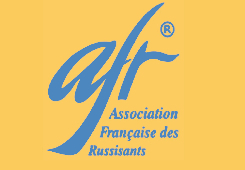

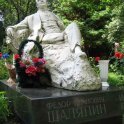
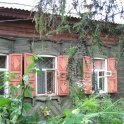

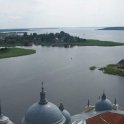
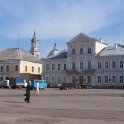
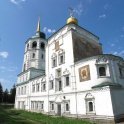


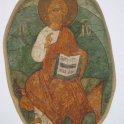


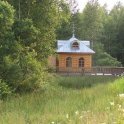
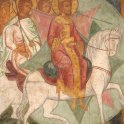
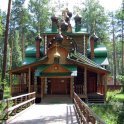

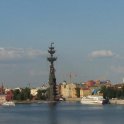
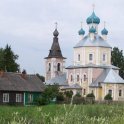
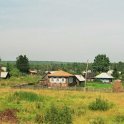
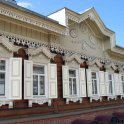
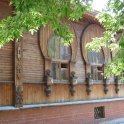

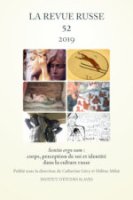
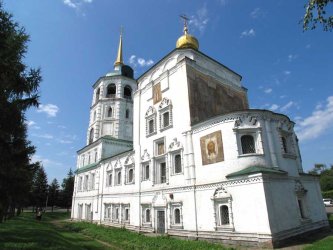
 Sommaire
Sommaire